How to Use the Clone Stamp Tool in Photoshop (Step by Step)
Knowing how to use the Clone Stamp tool in Photoshop is essential when editing photos.
It lets you remove objects and imperfections by duplicating pixels. The difference between the Clone Stamp tool and other Photoshop tools is that you have full control while cloning.
Read on to learn everything you need to know to use the clone stamp tool.
Where to Find the Clone Stamp Tool in Photoshop
You can find the Clone Stamp tool in the toolbar on the left-hand side. The shortcut for the clone stamp for both Mac OS and Windows is “S.”

If you can’t see the toolbar on the left, make it visible using the “Window” menu.
Click on “Tools” all the way down in the menu.
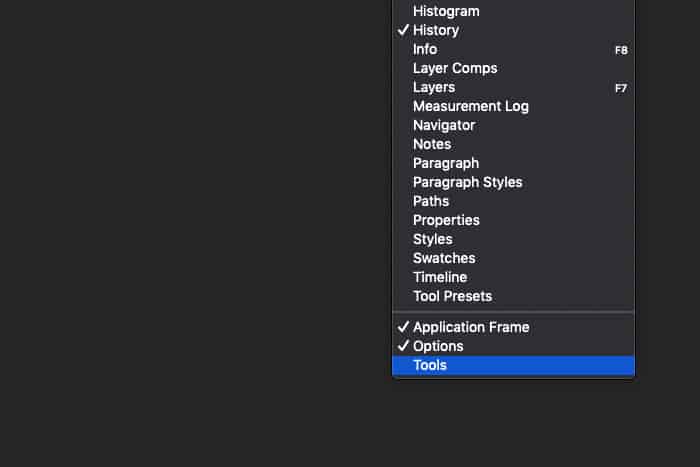
For more difficult projects, you will also need the Clone Source panel.
You can also find it in the Window menu.
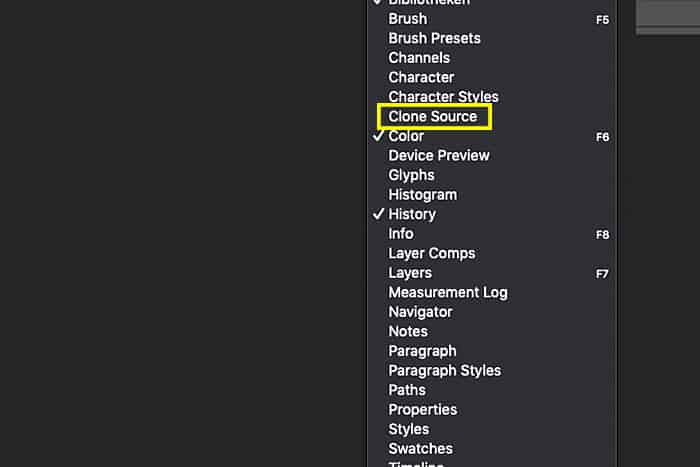
How to Remove Unwanted Objects With the Clone Stamp Tool
Imperfections or distractions could mess up a great fashion or publicity photo. Luckily, removing them with the Clone Stamp tool is easy.
The Clone Stamp can remove anything from wires, dust spots, unwanted hair, and even people. It does this by cloning pixels from another part of the photo.
Let’s say I want to remove the man’s sandals in the photo from a beach in India. I’ll show you how to do that with the Clone Stamp tool.

© Joris Hermans
Step 1: Open the Photo and Zoom In
Open the photo you want to clean up and zoom in on the area you want to work with. But don’t zoom in too close. You want enough context so you can still see what’s going on in the image.
Click on the Clone Stamp tool in the toolbar on the left.
Always duplicate the background layer before you start working. This way, you can always go back to the original photo. Right-click on the background layer and select “duplicate layer.”
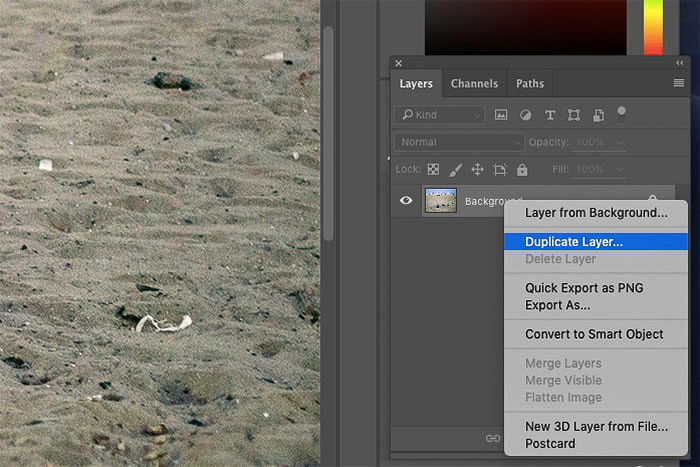
Step 2: Select a Clone Source
Pick a soft brush. Set the size of the clone stamp so it covers the object you want to remove. It takes some practice to know how hard and big your brush should be.
A good setting to start is a medium soft brush to achieve smooth edges.
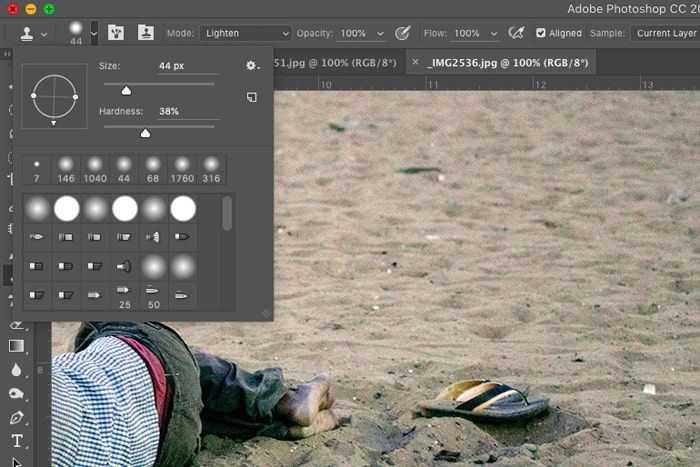
Move the cursor to the area you want to take pixels from. In this case, I need sand. Alt-click to confirm your source pixels. The cursor will change into crosshairs.
The moment you click, the cursor will change and show the pixels you’ve cloned.
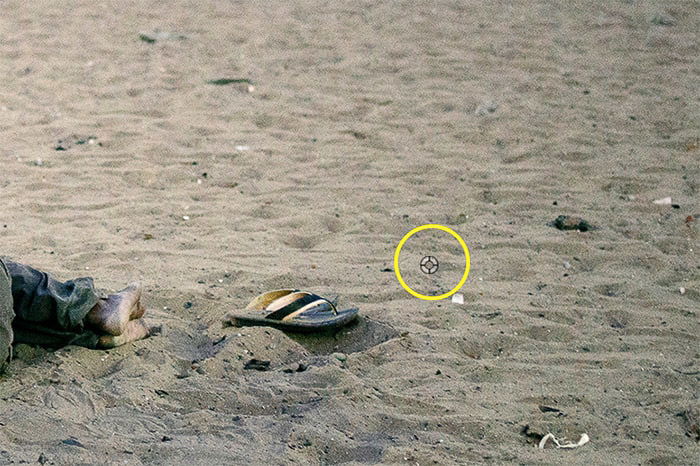
Step 3: Paint Over the Object You Want to Remove
Now start painting over the object you want to remove. Make sure it’s not obvious that you’re duplicating another part of the photo.
If it’s noticeable, go back and clone other pixels, then continue painting.

Repeat this until everything looks natural. If you want to go a few steps back in Photoshop, use the “undo” button. (Or Cmd + Z in Mac OS or Ctrl + Z in Windows.)
What you have to look out for is patterns. Patterns will give away the fact that you’ve cloned pixels and removed an object.
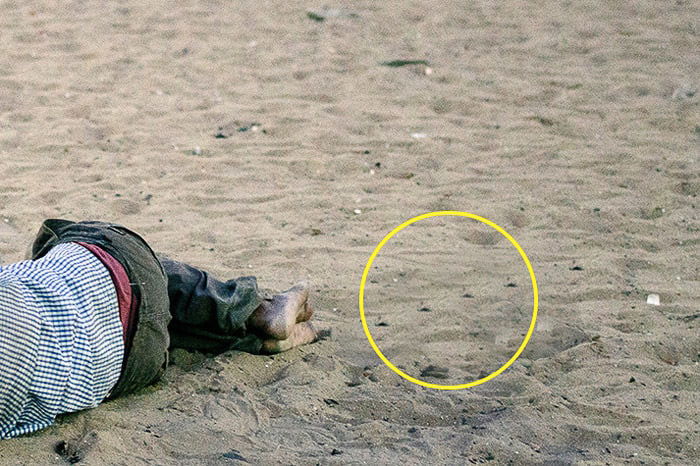
Avoid Patterns to Make the Cloning Look Natural
The Clone Source panel comes in handy when trying to avoid patterns. Use the two mirror buttons to make your cloning look more natural.
This will mirror the pixels you paint over the unwanted object. And the result will look better.
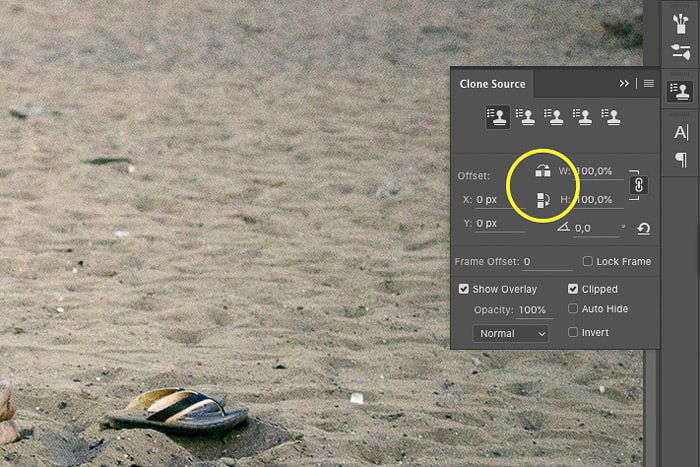
Playing around with the opacity of the brush will also help. Always try to mix different clone sources and opacity settings to get the best result.
The edges of the clone stamp have to be as smooth as possible.

Remove Skin Imperfections With the Clone Stamp Tool in Photoshop
Here’s another way to use the Clone Stamp tool in Photoshop. It’s the perfect tool to remove skin imperfections.
I’ll show you a specific technique that allows you to clean up imperfections while keeping a natural look. I’m going to remove some spots from this man’s face.
Step 1: Open the Photo and Duplicate the Background Layer
Open the photo and duplicate the background layer. Right-click and select “duplicate layer.”
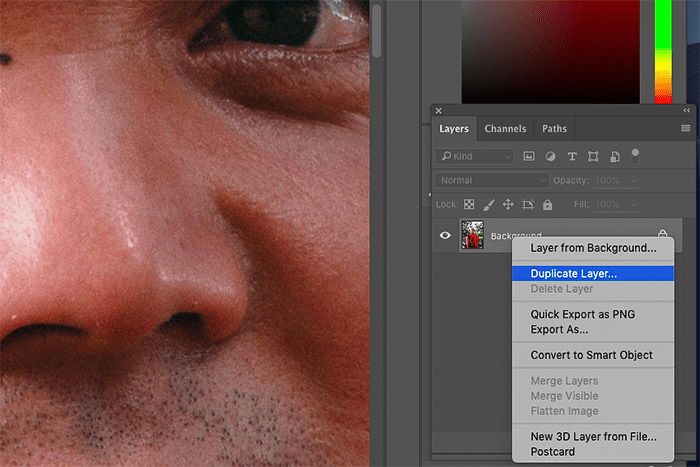
Now zoom in on the area with the skin imperfections you want to remove with the Clone Stamp tool.
It’s best to zoom in all the way to 100% for this process.

Step 2: Select a Clone Source
Repeat Step 2 from the example above. But this time, pick a part of the skin that’s similar looking to where the imperfections are.
Step 3: Select Brush Mode
This is what makes this an excellent technique for removing skin imperfections. It allows you to target specific details that you want to remove.
Set the brush mode to Lighten. The Clone Stamp will now only affect areas of the skin that are darker than the clone source selection.
In this case, it will only affect the darker-colored mole and make it lighter to match the skin around it. The rest of the skin will stay untouched.

If you set the brush mode to Darken, the opposite will happen.
I like this technique to remove wrinkles or spots on the skin. By setting the brush mode to Lighten or Darken, you can target specific areas of the skin. And the result looks very natural.
Step 4: Paint Over the Imperfection
Paint over the imperfection once or twice.

Conclusion
It takes practice to master the use of the Clone Stamp in Photoshop, but it’s well worth it. It won’t blend pixels like the Healing Brush tool. This gives you full control of the final result.
Start with easy Photoshop projects like removing dust spots or small skin imperfections.
Once you master this, you can move on to removing objects or even people. Always look out for patterns when you think you’re finished. Patterns give away the fact that you’ve removed an object, and it looks unnatural.
Also, only use the Clone Stamp tool when necessary and for certain types of photography. Don’t remove objects from a photo if you’re practicing photojournalism or documentary.




